New World 6. Natural, Social and Cultural Environment
D. The Universe
D. The Solar System
1. Our planet Earth
D. European politics and society
2. Spain's population
3. Economic activity in Spain
4. The age of discoveries
5. The Hapsburg period
6. Industrialisation and liberalism
7. The 20th century and the world today
8. Nutrition, breathing and circulation
9. The skeletal-muscular system
D. The senses
10. The nervous system
11. Machines and structures
12. Light and sound
13. [...]
Este libro contiene:
-
18 secuencias
-
864 recursos
-
Idioma:
- Inglés
Libro de texto
-
1. The Universe
- Ir a ficha de secuencia
- 0 secuencias
- 3 recursos
The Universe is made up of all the celestial bodies and all the enormous space around the celestial bodies. The most important celestial bodies are the stars. Stars Stars are gigantic balls of very hot gas. They give off light and heat. The Sun is a star. The Sun's diameter is 110 times larger than the Earth's and its mass is 330 000 times greater. The Sun is a medium-sized star. [...]
-
2. The Solar System
- Ir a ficha de secuencia
- 0 secuencias
- 3 recursos
The Solar System is made up of all the celestial bodies that are affected by the Sun's gravity. The most important of these are the planets. Planets Planets are large, round celestial bodies that orbit (turn around) a star. They always follow the same path, which is almost circular. Planets do not have their own light, but they can reflect light from the star that they orbit. [...]
-
3. Our planet Earth
- Ir a ficha de secuencia
- 0 secuencias
- 60 recursos
Most of the Earth is made up of the geosphere. This is a large sphere of rock with a diameter of 13000 km. A large part of the geosphere is covered by the hydrosphere. This is a layer of liquid water that forms seas, oceans, lakes and rivers. It is relatively thin, just 4 km on average. Above the geosphere and hydrosphere, there is a layer of gases called the atmosphere. It is also very thin, just tens of kilometres high. [...]
-
4. European politics and society
- Ir a ficha de secuencia
- 0 secuencias
- 1 recurso
Europe. a densely-populated continent Europe is a densely populated continent. It has more than 730 million inhabitants and an average density of 72 inhabitants per km². The population is unevenly distributed: In Central Europe, the population density reaches 300 inhabitants per km². In Nordic countries and mountainous areas, the population density is less than 20 inhabitants per km². [...]
-
5. Spain's population
- Ir a ficha de secuencia
- 0 secuencias
- 60 recursos
Spain has more than 46 million inhabitants. It is the fifth most populous country in the European Union. The distribution of the population in Spain is very uneven. Half of the population live in only seven provinces. All of these provinces are on the coast, except Madrid. Spain's population is mainly urban. Most people live in towns or cities. The number of inhabitants in Spain is increasing every year. [...]
-
6. Economic activity in Spain
- Ir a ficha de secuencia
- 0 secuencias
- 63 recursos
Spain has a labour force of over 21 million people who work in three economic sectors. People who work in the primary sector mainly work in farming and fishing. The secondary sector includes mining, industry, construction and energy. The tertiary sector, also known as the service sector, is the most developed sector. Commerce and tourism are especially important. Over 8 million people work in services. They bring a lot of money into the economy.
-
7. The age of discoveries
- Ir a ficha de secuencia
- 0 secuencias
- 66 recursos
Christopher Columbus's discovery of America in 1492 is considered to be the beginning of the Modern Age. At this time, the Catholic Monarchs, King Ferdinand and Queen Isabella ruled in the kingdoms of Castile and Aragon. They conquered other kingdoms to create modern Spain. The king and queen gave money and ships to Columbus and other European explorers to discover new lands and trade routes. [...]
-
8. The Hapsburg period
- Ir a ficha de secuencia
- 0 secuencias
- 69 recursos
During the 16th century, Spain was ruled by the Hapsburg kings, Charles I and Philip II. They built a large and powerful empire with possessions in Europe and the American colonies. However, during the 17th century their descendants Philip III, Philip IV and Charles II could not prevent economic problems, military defeats and the decline of the Spanish Empire.
-
9. Industrialisation and liberalism
- Ir a ficha de secuencia
- 0 secuencias
- 78 recursos
Contemporary Times began with the French Revolution in 1789 and continue until today. At the end of the 18th century, the new ideas of the Enlightenment led to political liberalism. Liberals supported the idea of a Constitution which limited government power and established citizen rights. During the 19th century, Europe entered a period of industrialisation, which caused many changes in society. [...]
-
10. The 20th century and the world today
- Ir a ficha de secuencia
- 0 secuencias
- 72 recursos
Human life changed during the 20th century more than ever before. The world's economy and population grew quickly and scientific and technological advances improved the average standard of living. However, the world also experienced two great wars, and humans invented the deadliest weapons in history. Considerable economic inequalities between rich and poor countries continue to exist today. [...]
-
11. Nutrition, breathing and circulation
- Ir a ficha de secuencia
- 0 secuencias
- 90 recursos
Our body needs nutrients and oxygen to live and grow. We obtain nutrients from food, and oxygen from the air. In our body, the digestive system gives us the nutrients that we need, and the respiratory system obtains oxygen from the air. Nutrients are combined with oxygen to give us energy. During these processes, we accumulate waste products. The urinary system expels these waste products. [...]
-
12. The skeletal-muscular system
- Ir a ficha de secuencia
- 0 secuencias
- 68 recursos
Our skeleton is made up of bones. These are living organs in our body that grow at the same rate as we grow. If they break, they can mend themselves. Some bones protect important organs in our body, such as our brain and our lungs. However, the most important function of our bones is to support our body and give it shape. Our bones also help us move, but it is our muscles that make the movements. [...]
-
13. The senses
- Ir a ficha de secuencia
- 0 secuencias
- 6 recursos
We receive information on what is happening outside our body through our sensory receptors. These receptors are specialised nerve cells that capture stimuli from outside our body. There are different kinds of sensory receptors. Each type specialises in one type of stimulus, and makes up what we call a sense. The main senses are sight, hearing, smell, taste and the senses that are in our skin, including touch. [...]
-
14. The nervous system
- Ir a ficha de secuencia
- 0 secuencias
- 54 recursos
Right now, you are reading these words and you understand them. If you see food when you are hungry, your mouth starts to water. If you burn your hand, you move it away immediately. You automatically do these things because of your nervous system. The function of the nervous system is to receive information from our five senses and from inside our body. [...]
-
15. Machines and structures
- Ir a ficha de secuencia
- 0 secuencias
- 60 recursos
In this unit we will look at electrical circuits, generators and motors that work by magnetism. We will also look at the machines and tools which help us do our work. Finally, we will look at structures. We can make many comparisons between the human body and structures. For example, the long metal tower of the crane in the photo is like the skeleton that supports our body. [...]
-
16. Light and sound
- Ir a ficha de secuencia
- 0 secuencias
- 61 recursos
We perceive most of the things around us because we can see or hear them. Most objects do not have their own light. We see them because they are illuminated by light from natural and artificial sources, and because we have a sense of sight. Light shines on the object, reflects off it, and the image reaches our eyes. Sound comes from the vibrations made by the objects and people around us. We can hear them because of our sense of hearing. [...]
-
17. Science and technology
- Ir a ficha de secuencia
- 0 secuencias
- 46 recursos
Progress in science and technology has improved our quality of life. New technologies have also led to the creation of computers and the Internet. Computers have become an essential part of most factories, offices, schools and homes. The Internet is like an enormous library of information. To make good use of the Internet, we need to learn how to find and filter the information that we are looking for. [...]
-
18. Glossary
- Ir a ficha de secuencia
- 0 secuencias
- 4 recursos
Unit 1: Our planet Earth earthquake (n): the shaking of the ground caused by the movements of tectonic plates. geosphere (n): the solid part of the Earth. humus (n): the decomposed remains of plants and animals in soil. lava (n): hot liquid rock expelled by a volcano. magma (n): hot rock in a liquid state. seismograph (n): a machine that detects earthquakes. [...]
Cursos y asignaturas
-
Aún no hay comentarios, ¡comparte tu opinión! Inicia sesión o Únete a Tiching para poder comentar
La licencia digital es una autorización que permite utilizar un recurso digital de acuerdo con las condiciones legales de dicho recurso. El código que recibas una vez la hayas comprado te permitirá acceder al recurso educativo digital elegido.
Puedes consultar más información en nuestra página de ayuda.

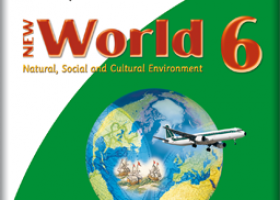

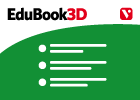


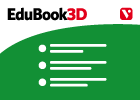
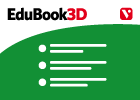
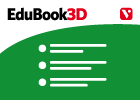
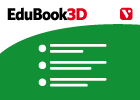
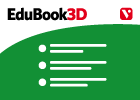

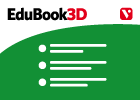
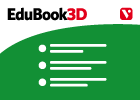
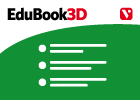
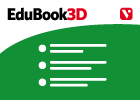
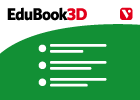
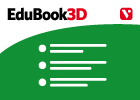

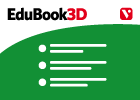




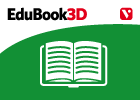
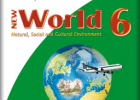


¿Dónde quieres compartirlo?
¿Quieres copiar el enlace?